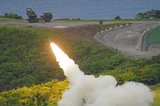MALD-J proves capability to protect aircraft
The US Air Force demonstrated that Raytheon Company's Miniature Air Launched Decoy Jammer could protect aircraft when it completed the first test of the MALD-J in a simulated operational environment.
MALD is a state-of-the-art, low-cost flight vehicle that is modular, air-launched and programmable. It weighs less than 300 pounds and has a range of approximately 500 nautical miles (about 575 statute miles). The current MALD family includes both the baseline MALD and a stand-in jammer variant called the MALD-J.
"This test marked the greatest number of multiple Raytheon MALD vehicles airborne at once and demonstrated MALD-J's ability to protect manned aircraft," said Harry Schulte, vice president of Raytheon Missile Systems' Air Warfare Systems product line. "Completion of this test also removes the last major hurdle toward MALD-J completing a Functional Configuration Audit."
In an FCA, the government validates that the system meets all requirements and performs to specifications. With the completion of the FCA, the US Air Force could authorize a Milestone C decision - the decision to begin production - by the end of 2011.
The flight test was the most rigorous and complex test to date. Multiple MALD-Js in free flight and multiple captive-carry MALD-Js conducted electronic attack missions and demonstrated MALD-J's ability to operate in a dynamic environment with a manned aircraft strike package.
The baseline MALD, which is currently in production, protects aircrew and airborne systems by mimicking the signatures and combat flight profiles of US and allied aircraft. The MALD-J protects aircrew and airborne systems by reducing or eliminating the need for manned stand-in jamming aircraft.
Source: Raytheon























